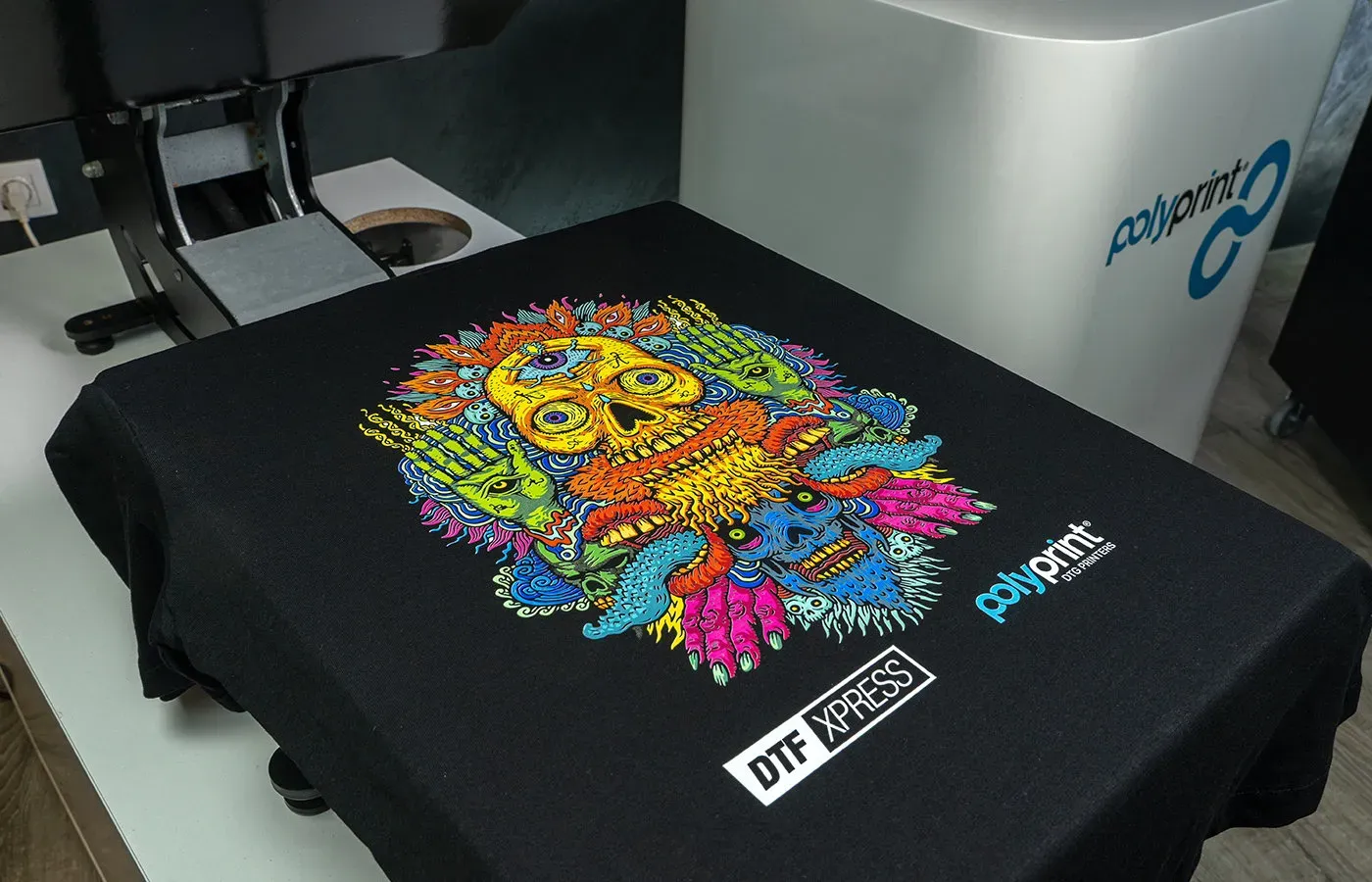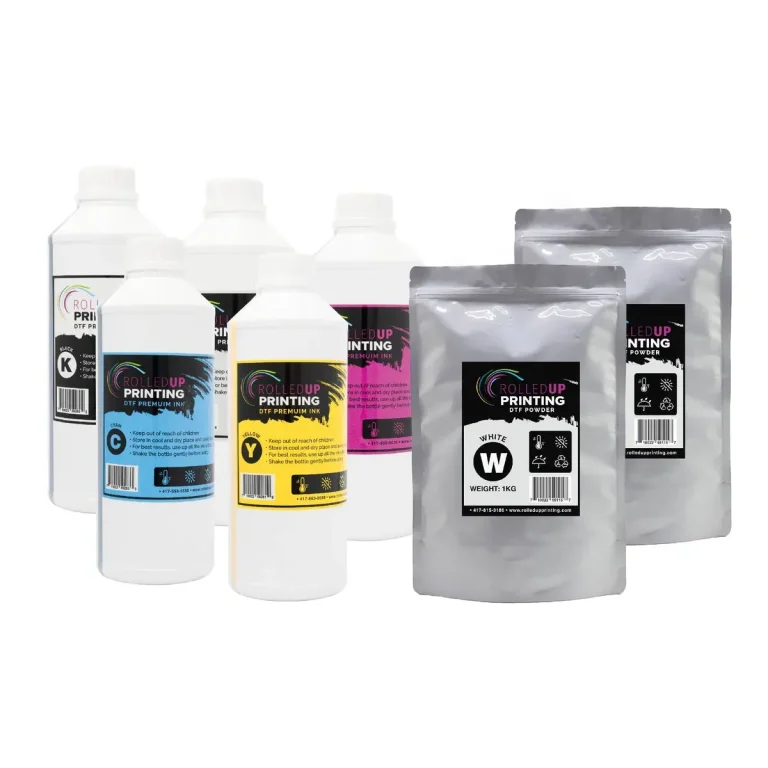DTF printing, or Direct to Film printing, has revolutionized the custom apparel industry by offering an innovative and accessible method for beginners and professionals alike. This cutting-edge technology allows for the transfer of vibrant, high-resolution designs onto a wide range of fabrics, making it an excellent choice for those entering the world of fabric printing. As you explore the DTF printing process, you will uncover numerous advantages that set it apart from traditional methods, including exceptional durability and versatility. This guide will provide essential insights into how to start DTF printing, including must-know tips and recommendations for the best DTF printers available in the market. Join us as we delve deeper into this exciting printing method that is taking the textile industry by storm.
Direct to Film printing is an emerging technology that has garnered significant attention in the custom textiles arena, making it a top choice for many creatives. This process involves applying high-quality prints onto films that can effortlessly transfer to a variety of fabrics, leveraging heat and pressure for a flawless finish. Its adaptability enables users to print on various materials, offering unmatched flexibility that traditional printing systems often lack. As we navigate through the intricacies of this innovative printing approach, we will analyze the crucial elements of the DTF printing process, highlight its numerous benefits, and offer valuable strategies for those pondering how to start DTF printing. Whether you are a novice looking to embark on a new journey or an expert refining your craft, understanding the nuances of Direct to Film printing can significantly enhance your creative potential.
Understanding the DTF Printing Process
The **DTF printing process** begins with designing your artwork using graphic design software. Once your design is ready, it is printed onto a specialized transfer film using a DTF printer, which is equipped with specific inks that allow for high-quality image reproduction. The key to success lies in the precision of the printing stage; the printer must lay down the ink accurately to ensure that the final product is vibrant and true to the original design. After printing, the next step involves applying adhesive powder while the ink is still wet. This ensures that the powder binds effectively with the design before it cures under heat.
Once the powder is applied, the film needs to undergo a curing process, which is essential for the adherence of the image to the fabric. Using a heat press, the printed film absorbs heat that solidifies the powder and inks, creating a durable bond when pressed onto the chosen fabric. The beauty of the DTF printing process lies in its simplicity and effectiveness, allowing even novices to achieve professional-looking results with relative ease. This straightforward process is what makes DTF printing increasingly popular among beginners and small business owners in the custom apparel market.
The Advantages of DTF Printing for Beginners
One of the standout **advantages of DTF printing** is its versatility across different fabric types. Unlike screen printing or other methods that may require fabric compatibility checks, DTF printing allows users to print on cotton, polyester, blends, and even specialty materials like leather. This flexibility opens a realm of possibilities for creativity, enabling beginners to experiment with diverse designs on various fabric substrates without worrying about compatibility issues.
Additionally, the durability of DTF prints ensures that your designs will last through multiple washes without fading or cracking. This resilience is crucial for custom apparel, especially when items are meant for repeated wear. Furthermore, DTF printing eliminates the need for weeding, which can be time-consuming and frustrating for beginners. This element of ease not only saves time but also allows new users to focus more on creativity rather than technical hassles associated with other printing methods.
Getting Started with DTF Printing: Essential Steps
Starting your adventure in DTF printing requires specific equipment and materials to ensure the best results. First and foremost, invest in a reliable **DTF printer** that is specifically designed for the process, capable of handling unique DTF inks. A quality heat press is equally important, as it ensures that the designs adhere appropriately to the fabric. Additionally, stocking up on the right transfer films and adhesive powders will further enhance your printing experience, providing the foundation for quality results.
Before launching into production, it’s wise for beginners to practice and familiarize themselves with their printer and heat press. Consider testing different fabrics to see how well they take the DTF transfer, as this experimentation will allow you to hone your skills and understand which materials yield the best results for your designs. By following these essential steps, you can avoid common pitfalls and start creating impressive apparel that showcases your unique style.
Helpful DTF Printing Tips for New Users
For new users entering the world of DTF printing, having a few solid **DTF printing tips** can greatly enhance your learning curve. One of the most important pieces of advice is to always refer to the manufacturer’s guidelines for the printer and materials you are using. Each printer may come with its own specific settings and requirements, and following these instructions closely will ensure optimal print quality and performance.
Additionally, don’t shy away from experimenting with different designs, colors, and fabric types. Start with simpler designs to build your confidence, and as you become more familiar with the equipment, challenge yourself with more complex artwork. This hands-on approach not only improves your skills but also allows you to discover the limitations and capabilities of your printer, ensuring that you maximize the potential of your DTF printing setup.
Exploring the Best DTF Printers on the Market
The market for **DTF printers** has expanded significantly, offering beginners a wide range of options that cater to different needs and budgets. When selecting a printer, it’s essential to consider factors such as print quality, speed, and the type of inks used. Some of the best models have received high praise for their ability to produce vibrant colors and intricate designs with precision, making them ideal for those just entering the DTF printing space.
Researching user reviews and expert recommendations can be invaluable when choosing your DTF printer. Look for models that not only meet your immediate needs but also offer scalability for future projects. Investing in a top-rated printer can pay off in quality and efficiency, ensuring that your transition into DTF printing is smooth and successful.
Current Trends in DTF Printing: Looking Ahead
As the **DTF printing** landscape continues to evolve, staying informed about current trends and developments is crucial for beginners who wish to remain competitive. One observable trend is the increasing integration of eco-friendly inks and materials, catering to a growing consumer demand for sustainability in fashion. As technology advances, manufacturers are producing inks that are not only vibrant but also environmentally friendly, aligning with market demands and consumer preferences.
Additionally, advancements in printing technology are making DTF printing more user-friendly than ever. New models come equipped with enhanced features that improve the user experience, such as automated calibration and integrated software solutions that simplify design uploads. Keeping an eye on these trends will not only keep your capabilities fresh but also empower you to innovate and explore new avenues in the realm of custom apparel printing.
Frequently Asked Questions
What is the DTF printing process and how does it work?
The DTF printing process involves printing designs onto a special film using DTF inks. After printing, adhesive powder is sprinkled onto the wet ink, which is then cured with heat. Finally, the design is transferred to the fabric using a heat press. This method ensures vibrant, durable prints on various fabrics.
What are the advantages of DTF printing compared to other methods?
DTF printing offers several advantages, including versatility across different fabric types, exceptional durability, and no weeding requirement. These benefits make DTF printing an attractive option for both beginners and professionals in custom apparel.
How do I start DTF printing as a beginner?
To start DTF printing, invest in a quality DTF printer and heat press, gather necessary materials like DTF films and powders, and familiarize yourself with the printing process. Begin by experimenting with different fabrics to understand which ones yield the best results.
What are some essential tips for successful DTF printing?
Successful DTF printing tips include using high-quality equipment, following manufacturer instructions carefully, and experimenting with various fabrics. Ensuring your workspace is clean and organized will also help achieve better results.
What are the best DTF printers available in 2023?
Some of the best DTF printers as of 2023 include the Epson SureColor series and the Roland VersaStudio series. These printers are known for their reliability, ease of use, and ability to produce high-resolution prints tailored for DTF printing.
How has the DTF printing market evolved recently?
The DTF printing market has experienced significant growth due to its user-friendly approach and adaptability in printing high-quality designs. Technological advancements have introduced faster, more efficient printers, making DTF printing increasingly accessible to beginners.
| Key Points | Details |
|---|---|
| What is DTF Printing? | A method for transferring high-resolution designs onto fabrics using a special film and DTF inks. |
| Key Components | DTF Printer, Films and Powders, Heat Press. |
| Advantages | Versatile across fabrics, durable prints, no weeding required. |
| Tips for Beginners | Invest in quality equipment, experiment with fabrics, and follow manufacturer instructions. |
| Current Trends | Market growth and technological advancements in printer models. |
Summary
DTF printing is a revolutionary technique that empowers beginners in the world of custom apparel. This innovative printing method not only allows for the transfer of vibrant, intricate designs onto a wide range of fabrics but also simplifies the process, making it accessible even for novices. With a focus on quality, durability, and versatility, DTF printing stands out as an ideal choice for those looking to explore their creativity and express individuality through custom designs. By leveraging the associated resources and tips, newcomers can easily navigate the essentials of DTF printing, paving the way for a successful and fulfilling journey in textile printing.



